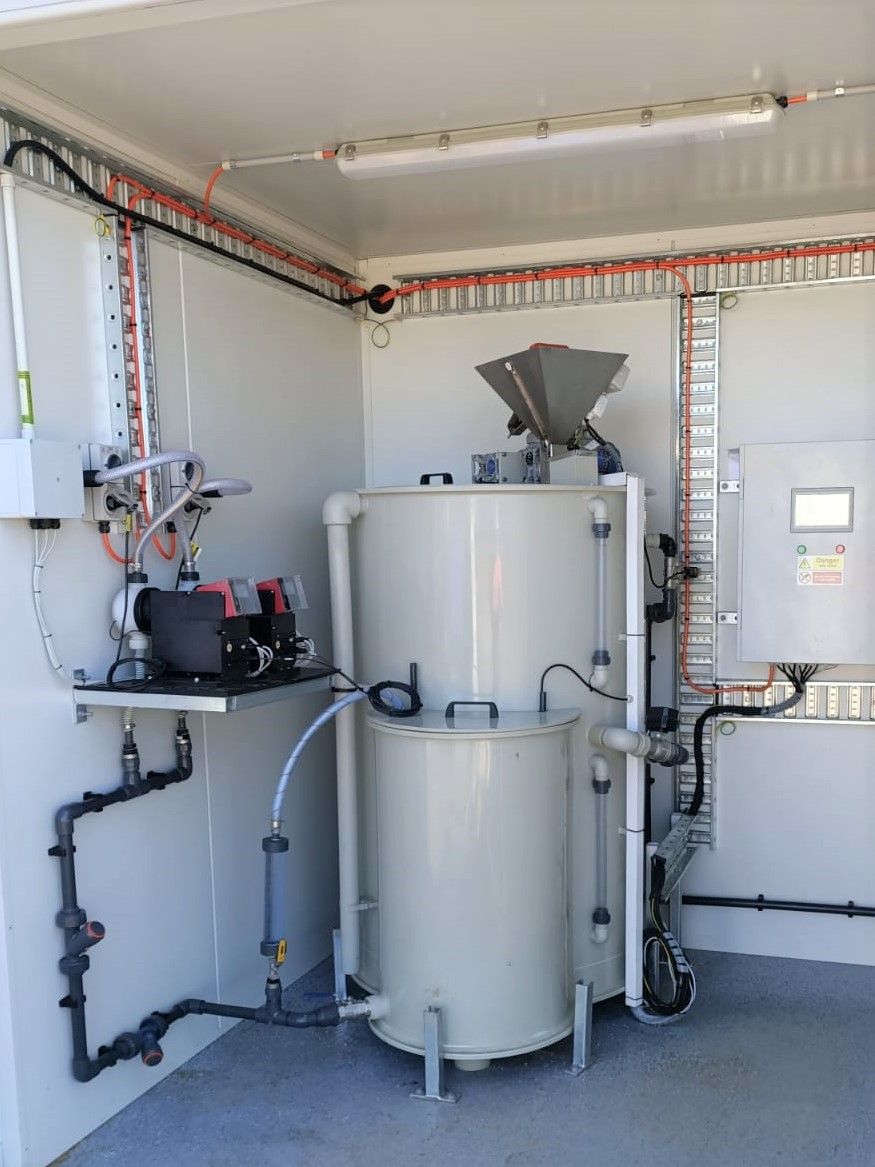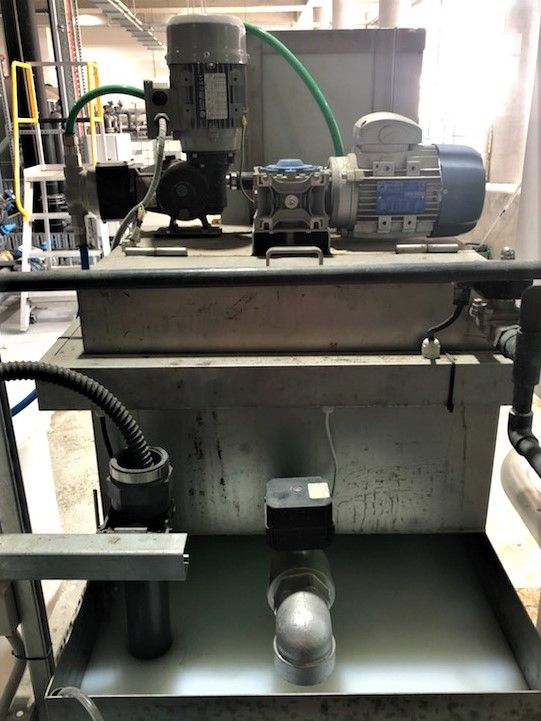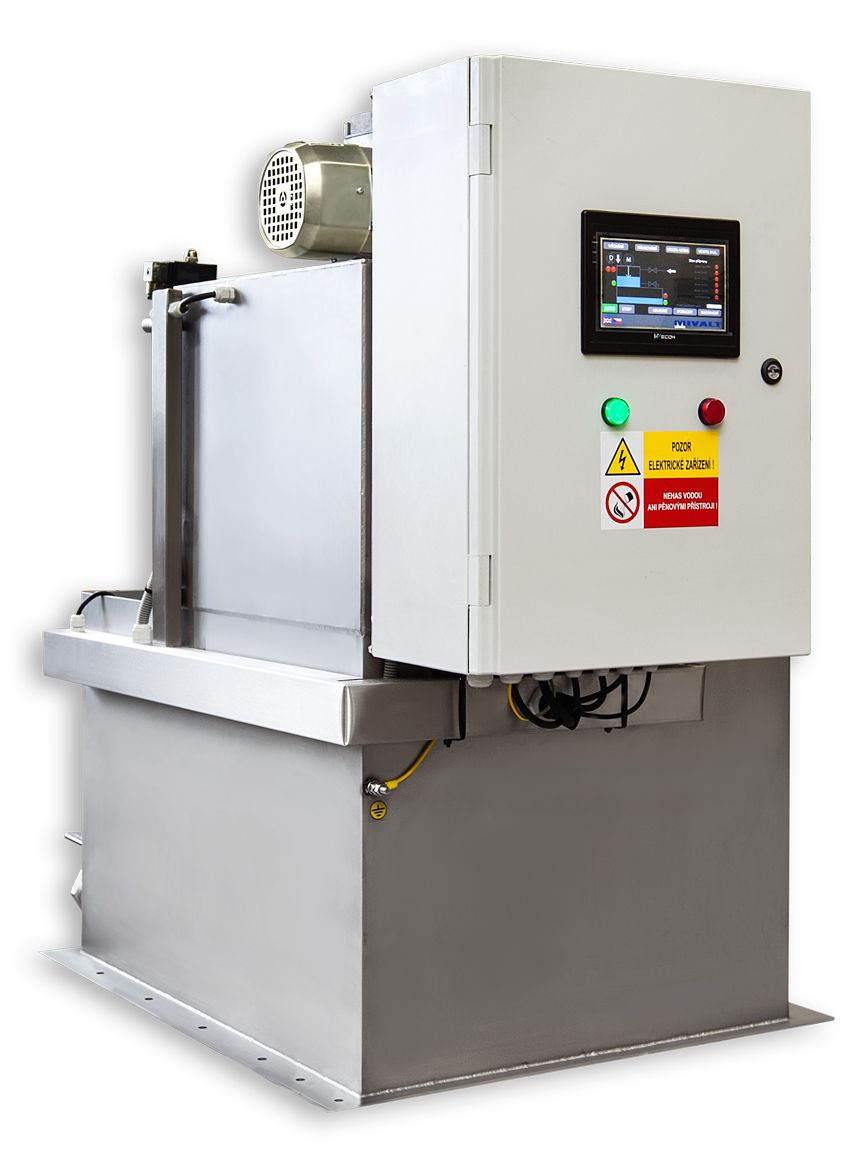Technology Overview
Both the C-type and P-type ASP systems have a mixing tank fitted with a mixer, and a solution storage tank. Both tanks are fitted with level probes used for control purposes. Once the polymer in the tank drops below a certain level, a new preparation cycle is triggered automatically. There are actuated valves on the water inlet, and on the discharge of matured polymer solution between mixing and storage tanks.
The P-type has a powder hopper with heated feeder that feeds powder polymer into the mixing tank. The C-type has a feed pump to transfer concentrated liquid polymer from a bulk tank (by others) into the mixing tank. The powder hopper for the P-type is filled manually.
Key Features
• Simple and robust design
• Ease of installation & operation
• Fully automated control
• Low investment cost
Technical Specifications
Standard Specifications
Notes:
*¹ Maximum solution output is based on the time required to prepare a batch of matured polymer (where polymer chains are fully unrolled) and assumes using standard municipal water pressure to fill the mixing tank. Liquid concentrate polymer requires approx. 20-25 min/batch to mix and mature, and powder polymer requires approx. 65-75 min/batch. Example calculations:
- ASP-1C: 110 L mixing tank @ 3 - 2.4 batches/hr gives 330 - 264 L of matured polymer solution per hour, i.e. rated max 300 L/h
- ASP-2P: 150 L mixing tank @ 0.9 - 0.8 batches/hr gives 135 - 120 L of matured polymer solution per hour, i.e. rated max 130 L/h
*² Powder feeder: speed 56 rpm, heating power 10W (230V AC), knock system solenoid 40W, 20N
*³ Polymer concentrate polymer transfer pump: 3ph, 0.25kW piston pump, 316 SS, max flow 85 L/h, max 100 m head, manual stroke adjustment
Standard Inclusions and Options
Note 1: For transfer of liquid concentrate into mixing tank. Note 2: For transfer of polymer solution from storage tank into the process.
Hire








